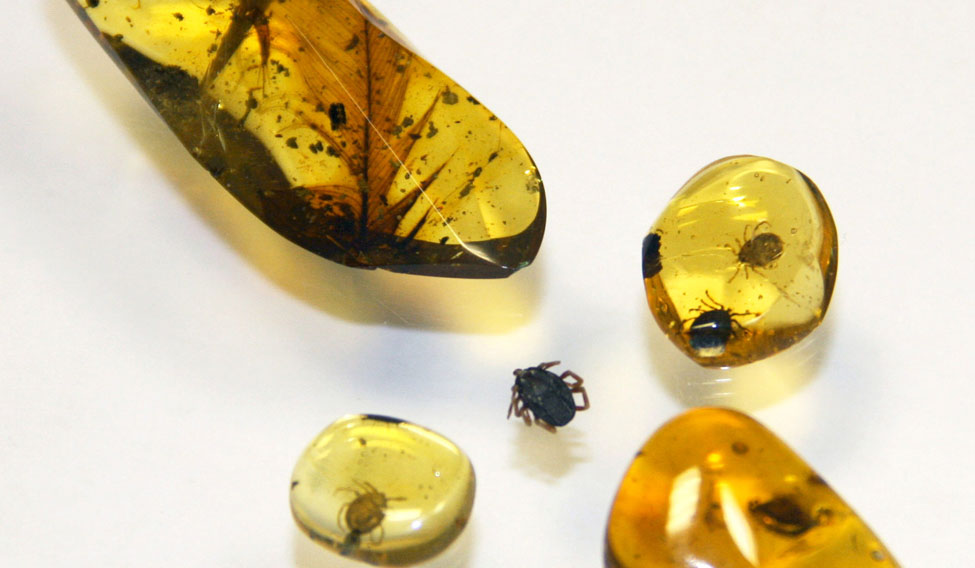Ticks, the notorious disease-spreading parasites, have been making life miserable far longer than human beings have walked the Earth. Even dinosaurs felt their blood-sucking wrath.
Scientists described a number of ticks, including a previously unknown species that they named after the fictional vampire Dracula, entombed in chunks of amber from Myanmar dating back 99 million years, including one still grasping a feather apparently from a feathered Cretaceous Period dinosaur.
One of the ticks belonging to the species Deinocroton draculi, meaning “Dracula’s terrible tick,” was found so engorged with blood that it increased its size eight-fold. If that sounds familiar, it is the premise of the Jurassic Park books and movies in which DNA extracted from the guts of dinosaur-biting mosquitoes trapped in amber was used to recreate dinosaurs.
Do not expect any dino-cloning from these ticks.
“It seems that modern techniques are unable to extract DNA, or at least sufficiently well-preserved DNA, from amber inclusions (organisms trapped in amber). DNA does not stand the passing of time, of millions of years, when entombed in amber,” said paleontologist Ricardo Pérez-de la Fuente of the Oxford University Museum of Natural History, one of the researchers in the study published in the journal Nature Communications.
Amber, fossilised tree resin, has provided a remarkable window into the past, with numerous types of small animals and plants preserved in superb detail. In this case, the amber offered the first direct evidence of a parasite-host relationship between ticks and feathered dinosaurs. These ticks also are among the oldest examples of these parasites in the fossil record.
The characteristics of the feather being grasped by an immature tick did not allow the researchers to pinpoint a specific type of feathered dinosaur that was the parasite’s blood meal. The researchers suspect it was a running dinosaur or perhaps a primitive bird, the evolutionary offshoots of dinosaurs.
Two of the Dracula ticks provided additional indirect evidence of these parasites feeding on dinosaurs. Hair-like structures from the larvae of so-called skin beetles were found attached to the ticks. Modern skin beetles feed in nests, eating feathers, skin and hair from the nest’s occupants.
“Most people don’t know that Bram Stoker’s Dracula was a fictionalized account of a real person, Vlad the Impaler, both blood-thirsty villains, although the ticks are merely making a living,” said entomologist David Grimaldi of the American Museum of Natural History in New York.
—Reuters





